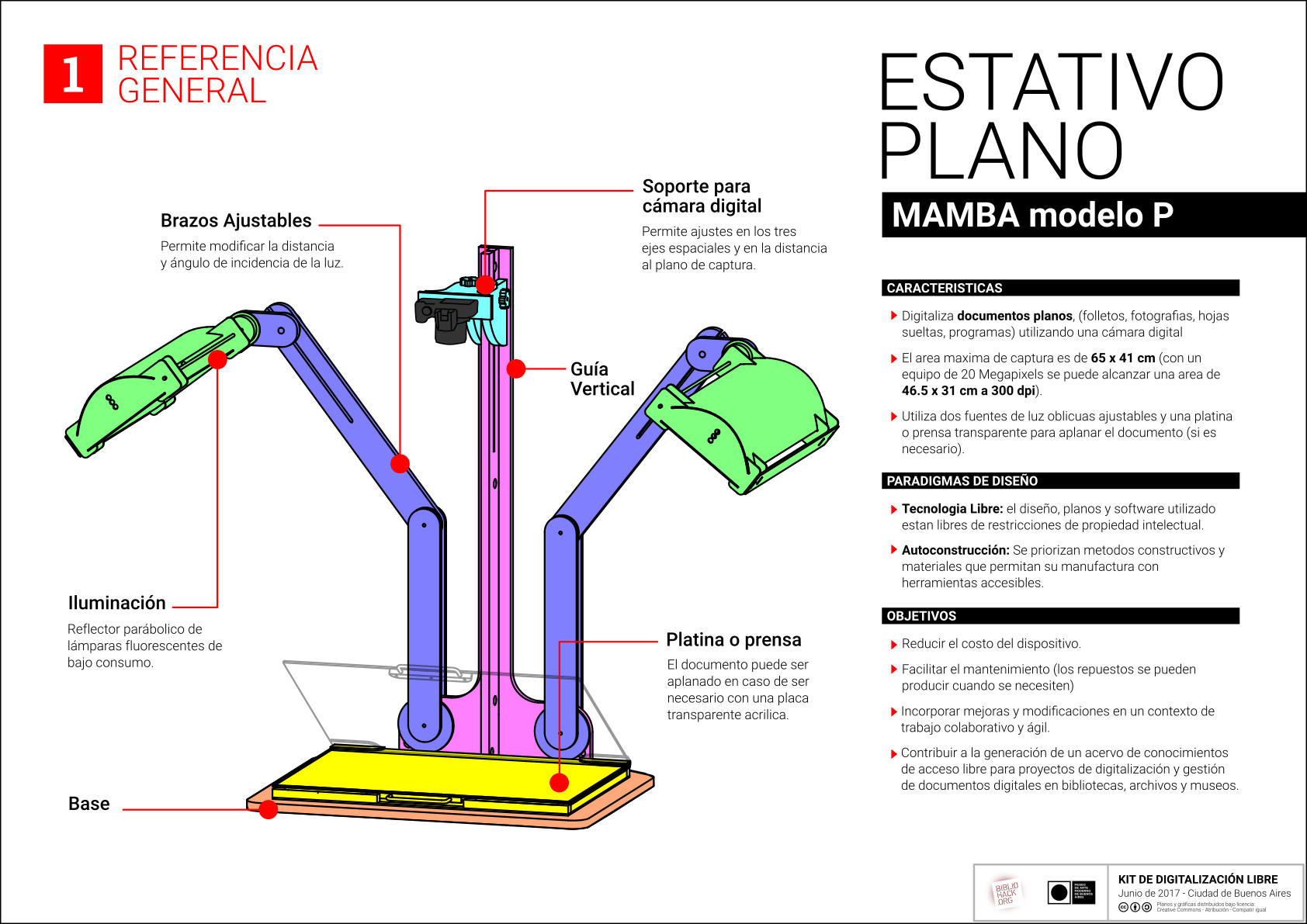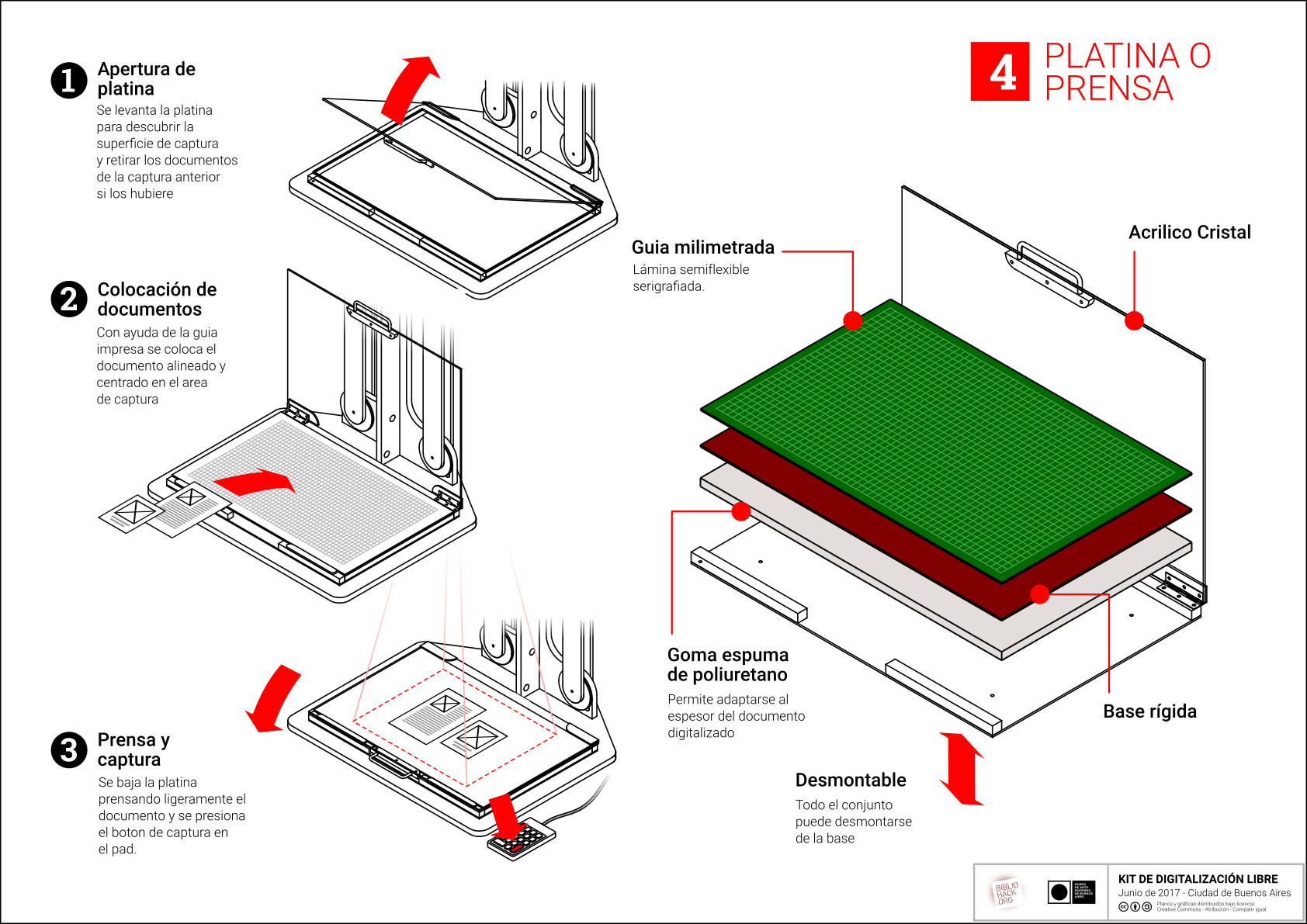In April 2017, we began initial working meetings with Valeria Semilla and Helena Raspo from the Modern Art Museum - and Ines Esteves from the museum's library - to analyze the possibility of designing and building a low-cost overhead capture stand for the institution, while developing and adapting software resources to efficiently process digitized materials. This initiative was part of an ambitious project to digitize the museum's documentary collection on the history of Argentine modern art.
The Library of the Modern Art Museum of Buenos Aires was established in the 1960s, just a few years after the museum's founding, with the mission to gather, preserve, organize, and disseminate specialized bibliographic, periodical, and documentary heritage on 20th and 21st century visual arts. It holds over 7,000 volumes, including books and exhibition catalogs. The library also contains all publications edited by the museum since its foundation. Its collections include donations from prominent figures in the art world such as art critic José León Pagano, collector Ignacio Pirovano, and artist Alberto Heredia.
The museum's modest early years reflect a history of setbacks and challenges overcome through the determination of its founder, art critic Rafael Squirru. Without a permanent location, the museum remained itinerant until it secured space in the upper floors of the Teatro General San Martín. However, it wasn't until 2018, 62 years after its founding, that the museum finally obtained a complete headquarters at its current location on Avenida San Juan in San Telmo. Although the building (formerly the Piccardo Tobacco Factory) was granted in 1987 and the move occurred two years later, the Moderno still faced periods of bureaucratic and budgetary neglect that even forced its temporary closure in the early 2000s.
In recent years, the museum received special attention as a priority project for the city government, part of a strategy to regain Buenos Aires' prominence in the influential contemporary art scene. While funds flowed abundantly for building expansion and renovations, challenges in maintaining sustainable digitization projects persisted, as is common with most libraries and museums in the city. This clearly illustrates the structural limitations of cultural institutions in developing countries and demonstrates where Bibliohack and open technologies can contribute. The question remains: If the Modern Art Museum faces such limitations, what about other museums with even smaller budgets?
Custom Development
Our initiative was chosen not just for cost-effectiveness, but also for its horizontal work approach, openness, technical appropriation, cross-department integration, and adaptability to changing contexts. As part of the "Modern Art Documents" project, we began prototyping and refining a new stand model to expand open technology options for systematically working with pamphlets, photographs, maps, posters, ephemera, and other materials.
The project required collaboration between different museum departments to establish guidelines for conservation, lighting, document selection, archival description, data management, format specifications, and online publication from a practical perspective. For capture and post-processing software, we developed new features and adapted configurations based on the materials' specific characteristics, analyzing digital access and preservation conditions through constant feedback with museum and library staff. The stand's development involved testing various structural configurations considering space limitations and usability.
Ultimately, this year-long collaboration with the museum reinforced our belief that beyond the priorities and limitations that sometimes lead to discouraging policies, it's the strategic cooperation between direct collection custodians and the adoption of free/libre open-source software and hardware - plus context-appropriate technology - that enables capacity building and long-term resource resilience.
















